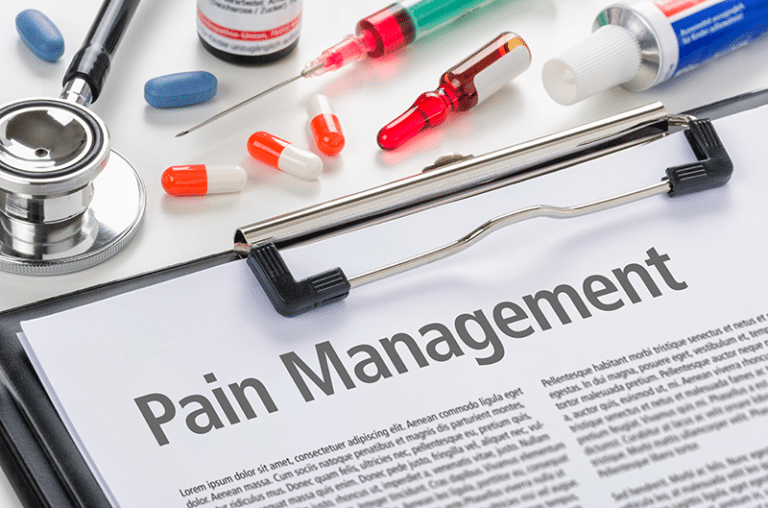Interventional Pain Management for Back Pain


Back pain is a common condition that affects people of all ages and backgrounds. It refers to any discomfort or pain felt in the back, ranging from mild to severe.
The causes of back pain can vary, from poor posture and muscle strain to more severe conditions like herniated discs or spinal stenosis.
Managing back pain effectively is important because it can significantly impact a person’s quality of life.
This may involve a variety of treatments, including medication, physical therapy, or interventional pain management. The latter involves minimally invasive procedures, such as nerve blocks or injections, to target the source of the pain and provide relief.
Overall, seeking professional medical advice for back pain is crucial to determine the best course of treatment.

Acute back pain is sudden and severe pain that usually lasts a few days to What are the risks and side effects associated with the different types of treatments for back pain?a few weeks. It can be caused by injury, strain, or overuse of the back muscles.
Chronic back pain is pain that lasts for more than three months. Various underlying medical conditions, such as arthritis or degenerative disc disease, can cause ongoing back pain.
Radiculopathy is a condition that affects the nerves in the spine. It can cause pain, numbness, or weakness in the back, legs, or arms. A herniated disc or spinal stenosis often causes radiculopathy. Treatment for radiculopathy may include physical therapy, medication, or surgery.
Sciatica is a type of radiculopathy that affects the sciatic nerve, which runs from the lower back down to the legs. It can cause pain, numbness, or tingling in the back, legs, or feet. A herniated disc or spinal stenosis often causes sciatica.
Herniated discs occur when the soft tissue inside a disc in the spine bulges or ruptures. It can cause pain, numbness, or weakness in the back, legs, or arms. Herniated discs can be caused by injury or degenerative disc disease.
When you experience back pain, it is important to give your body time to heal. This means avoiding activities that exacerbate your pain, such as heavy lifting or high-impact exercise.
Instead, focus on gentle stretching and low-impact exercise, such as walking or swimming.
A physical therapist can work with you to develop an exercise plan that targets the muscles and joints in your back, helping to alleviate pain and improve mobility.
This may include stretching exercises, strength training, and low-impact aerobic exercise.
Over-the-counter pain relievers such as ibuprofen and acetaminophen can be effective for mild to moderate pain.
Prescription medications such as muscle relaxants and opioids may be recommended for more severe pain. Still, they should be used cautiously due to the risk of addiction and other side effects.
Chiropractors use manual manipulation to realign the spine and alleviate pain. This treatment may include massage therapy and other techniques to improve mobility and reduce inflammation.
Acupuncture is a traditional Chinese medicine practice that involves the insertion of thin needles into specific points on the body. This can help alleviate back pain by stimulating the body’s natural healing processes and reducing inflammation.
The goal of this injection is to reduce inflammation and relieve pain. This technique is commonly used to treat herniated discs, spinal stenosis, and sciatica.
Facet joint injections involve injecting a combination of a local anesthetic and a steroid into the affected joint to relieve pain and inflammation.
Radiofrequency ablation is a minimally invasive procedure involving heat to destroy nerve fibers that transmit pain signals from the affected area to the brain.
Spinal cord stimulation involves using a small device implanted under the skin to deliver electrical impulses to the spinal cord. These impulses interfere with the pain signals sent to the brain, reducing pain.
Intrathecal drug delivery involves using a small pump implanted under the skin to deliver pain medication directly into the spinal cord.
Nerve blocks involve the injection of a local anesthetic into a specific nerve or group of nerves to block pain signals.
Intradiscal electrothermal therapy involves using heat to shrink and seal the tears in the outer layer of a herniated disc.
Microdiscectomy is a minimally invasive surgery used to treat herniated discs. The procedure involves removing the portion of the herniated disc that is pressing on a nerve root.
Endoscopic discectomy is another minimally invasive surgery used to treat herniated discs. A small tube with a camera is inserted through a small incision in the back during the procedure.
The surgeon uses the camera to locate the herniated disc and remove the portion causing pain.
Vertebroplasty and kyphoplasty are minimally invasive surgeries used to treat compression fractures in the spine. During the procedure, a small incision is made in the back, and a special cement is injected into the fractured vertebrae to stabilize it.
Percutaneous discectomy is a minimally invasive surgery used to treat herniated discs. A small tube is inserted through a small incision in the back during the procedure.
The surgeon uses the tube to remove the portion of the herniated disc causing pain.
Laser spine surgery is a minimally invasive surgery used to treat various back conditions, including herniated discs, spinal stenosis, and bulging discs.
During the procedure, a laser is used to remove or shrink the disc’s portion causing pain.
Interventional pain management techniques are essential for individuals suffering from back pain. At Momentum Medical, seeking professional help for back pain management is crucial to finding relief.
Our clinic offers a range of interventional pain management techniques, including nerve blocks, epidural steroid injections, and radiofrequency ablation. These techniques reduce inflammation, alleviate pain, and promote healing.
Seeking professional help from a team of experts in interventional pain management techniques can help individuals suffering from back pain regain their quality of life and enjoy activities they once thought were impossible. 1. Consider breaking up the text into shorter paragraphs to make it easier to read and digest. This can help the reader better understand the different types of back pain and treatments available. 2. Provide more specific examples of low-impact exercises that can be helpful for managing back pain. This can help readers who are looking for ways to manage their pain through exercise but may not know where to start. 3. Include information about the importance of seeking professional medical advice before trying any new treatments or exercises. This can help readers understand the potential risks and benefits of different approaches and make informed decisions about their health.
Serving Volusia, Flagler, Orange, Osceola, Hillsborough, Pasco, Pinellas, and Seminole county patients with back pain conditions, sports injury, work injury, headaches, lower back pain, auto accident injuries, neck pain and more.
Our staff can accommodate Spanish, French and Russian speaking patients. All other languages with enough notice we can schedule a translator.
Todas nuestras localizaciones tienen hablantes de español en el personal.
© 2024 Momentum Medical